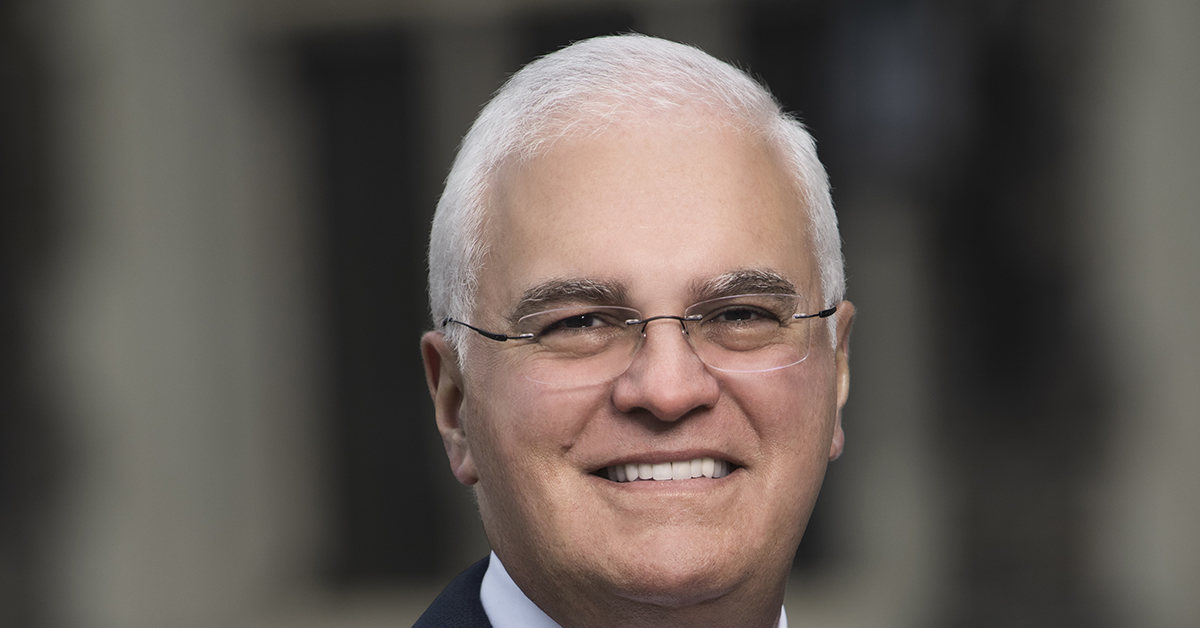Nutrien CFO Pedro Farah discusses innovation opportunities in corporate finance. Nutrien is a Global 500 producer of potash, nitrogen and phosphate products for agricultural, industrial and feed customers.

Global Finance: How much has the finance organization’s role changed since the 2018 merger of PotashCorp and Agrium, which created Nutrien?
Pedro Farah: Quite a bit. I came to a merger of equals in which none of the finance leaders were staying. So there was a lot of “Well, I’m from Potash,” and “I’m from Agrium.” and I’m coming in and saying, “I’m from Nutrien,” because I don’t have a faction here. I don’t belong to this culture or other culture—we needed to form a new thing. And we were late, quite frankly, since we were one year into the merger.
When looking at the finance organization, I view it through the lenses of hardware and software. Hardware is the non-people-dependent part of the organization, such as strategy, systems and structure. They need to be efficient co-drivers for finance and not in the background just recording numbers.
Using a soccer analogy, if there is an attack on the midfield or defense, we need everyone to play their positions and work together. It’s the same for finance. We needed Shared Services to do all the data stewardship and transactional part of finance, and the Centers of Excellence to do all the deep technical things like tax, treasury and accounting, while Decision Support generates data-driven insights.
Taking a page from my past in the tech industry, we wanted to quickly change the “hardware and software” of finance. The hardware was the strategy, systems and structure. But the “software” was the critical part, composed of staffing, skills and style. Once we set the strategy, we turned most of our attention to talent management and ensuring we have the talent and giving them a voice and encouraging them to innovate.
We value innovation because even though history repeats itself, there are some secular trends in our business, like digitalization or precision agriculture, that are changing everything in the future, so we cannot ignore them.
GF: Has Nutrien hired employees with nontypical skillsets for finance, such as data scientists?
Farah: We have data scientists in our digital organization, and we work very closely and effectively with them. Our IT and digital teams are very well-integrated into the company, which is refreshing. They’re very responsive and innovative, not only with the significant programs but also with the numerous small programs that facilitate transactions with fewer touches and that bring more significant insights.
GF: Is innovation coming from the outside via adopting new products and services or more from those using such tools?
Farah: Maybe I’ll just bring up one illustration for you. One example of our innovation is Nutrien Financial, a captive finance company that was created before I joined the company. We provide a one-stop shop for all the different financing information or financing needs for farmers where we operate in North America and Australia, and soon in Brazil.
The offering involves extending the lines covering all the farmers’ financial needs regarding their crop inputs, which need to be highly digitalized. To establish all that history, we needed to have online applications for credit and credit adjudication for each one of them. People can apply for credit or extend the credit based on what they’re buying, including some of the inputs from our suppliers via their phones. Programs from other large providers flow through us as well.
All of this can be done through banks, but banks typically have a narrower relationship with a customer than we do. We also work with different margins than just a bank’s spread and are willing to take more calculated risks.
We created a financial institution almost from a standstill in three years that is still growing and is self-reinforcing as customers who tend to finance their products with Nutrien Financial have a greater propensity to buy additional products from the company. Data on what they buy, how they buy it and how they pay for it used to sit in different places three years ago. Now, it’s organized and interconnected, which lets us calculate our risks better and better serve our grower customers.



